
There’s a rich and deep visual tradition for filmmakers to tap into when they approach an adaptation of a comic book. For Doctor Strange in the Multiverse of Madness, the world of Marvel’s Doctor Strange comic heritage, and the established visual style of the character’s first eponymous feature film (2016) provided opportunities to both honour the legacy and strike out to create new images and forms. A fusion of genres – fantasy, horror, and time travel – as it progresses, Doctor Strange in the Multiverse of Madness becomes increasingly Gothic and horror-styled, and has a visual energy that might be familiar from other Sam Raimi movies; notably The Evil Dead and his Spider-Man films.
Fundamental to the work required to mount a lavishly resourced comic book movie like Doctor Strange in the Multiverse of Madness is the input of a visual development and concept art team, whose work becomes part of a dynamic with the visual effects and animation departments to tell a story in a coherent and vivid way.
Sylvain Degrotte, a CG supervisor at Framestore, offers a deep dive into the creative choices and challenges of the project for the studio’s visual development team, and how that work informs visual effects elements. The concept art generated by the team at Framestore allowed for an exploration of storytelling possibilities around mood, scale, genre, tone, and key points of character and plot.
This story is from the {{IssueName}} edition of {{MagazineName}}.
Start your 7-day Magzter GOLD free trial to access thousands of curated premium stories, and 9,000+ magazines and newspapers.
Already a subscriber ? Sign In
This story is from the {{IssueName}} edition of {{MagazineName}}.
Start your 7-day Magzter GOLD free trial to access thousands of curated premium stories, and 9,000+ magazines and newspapers.
Already a subscriber? Sign In
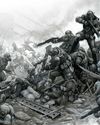
PAINT EPIC BATTLES IN TRADITIONAL INK
Warhammer illustrator THOMAS ELLIOTT shows you how to create an epic science fiction fight scene with this step-by-step guide
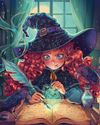
CONJURE MAGIC ILLUSTRATIONS
Daria Anako demonstrates her process for creating a whimsical piece of art with some spellbinding touches
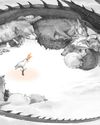
First Impressions
We discover the early influences that inspired the artist
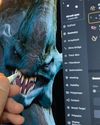
ZBrush for iPad
GAME CHANGER The desktop version of popular 3D sculpting software ZBrush has been redesigned for iPad - and it's brilliant

BenQ GW2786TC
GET AN EYEFUL Don't scrimp out on your health with a monitor that's kind on the eyes and good for creative tasks
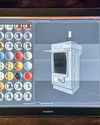
Huion Kamvas Pro 19
TABLET WARS An attractive pen display does an excellent job of balancing price and performance as it sets out to challenge its rivals in the mobile marketplace
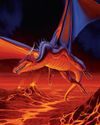
DRAGON OFORCEC
Legendary D&D artist Larry Elmore explains the keys to crafting timeless fantasy art.
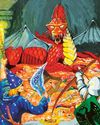
DUNGEON MASTERS
ImagineFX marks the milestone 50th anniversary of the launch of Dungeons & Dragons with a look at its rich tradition of illustration
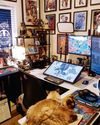
Erik Ly
Gamer's haven Why the artist enjoys a maximalist aesthetic more than the minimalist approach.
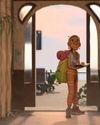
2D meets 3D: How the workflows are merging
Interdimensional As VFX and animation evolve and tools become more accessible, Tanya Combrinck asks whether the separation between the mediums is reducing